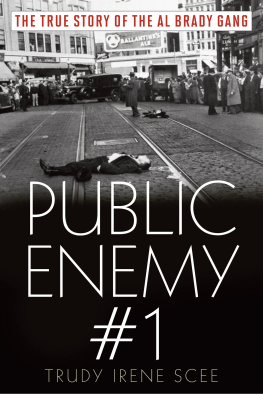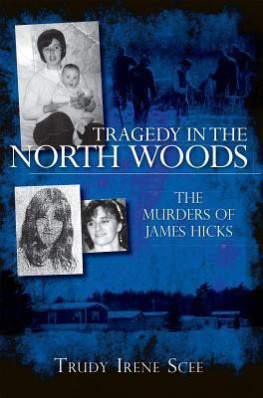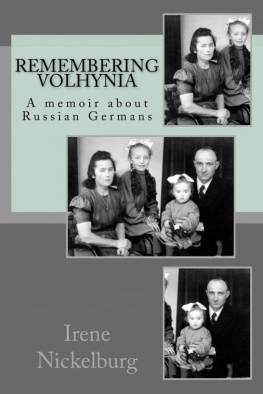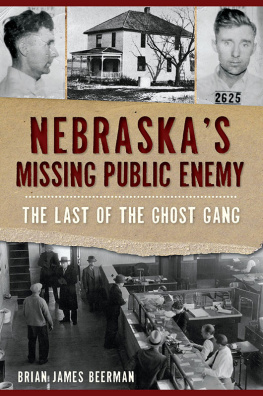Trudy Irene Scee - Public Enemy Number One: The True Story of the Brady Gang
Here you can read online Trudy Irene Scee - Public Enemy Number One: The True Story of the Brady Gang full text of the book (entire story) in english for free. Download pdf and epub, get meaning, cover and reviews about this ebook. City: Camden, Maine, year: 2015, publisher: Down East Books, genre: Non-fiction. Description of the work, (preface) as well as reviews are available. Best literature library LitArk.com created for fans of good reading and offers a wide selection of genres:
Romance novel
Science fiction
Adventure
Detective
Science
History
Home and family
Prose
Art
Politics
Computer
Non-fiction
Religion
Business
Children
Humor
Choose a favorite category and find really read worthwhile books. Enjoy immersion in the world of imagination, feel the emotions of the characters or learn something new for yourself, make an fascinating discovery.
- Book:Public Enemy Number One: The True Story of the Brady Gang
- Author:
- Publisher:Down East Books
- Genre:
- Year:2015
- City:Camden, Maine
- Rating:3 / 5
- Favourites:Add to favourites
- Your mark:
- 60
- 1
- 2
- 3
- 4
- 5
Public Enemy Number One: The True Story of the Brady Gang: summary, description and annotation
We offer to read an annotation, description, summary or preface (depends on what the author of the book "Public Enemy Number One: The True Story of the Brady Gang" wrote himself). If you haven't found the necessary information about the book — write in the comments, we will try to find it.
Public Enemy Number One: The True Story of the Brady Gang — read online for free the complete book (whole text) full work
Below is the text of the book, divided by pages. System saving the place of the last page read, allows you to conveniently read the book "Public Enemy Number One: The True Story of the Brady Gang" online for free, without having to search again every time where you left off. Put a bookmark, and you can go to the page where you finished reading at any time.
Font size:
Interval:
Bookmark:
Public Enemy Number One
Public Enemy Number One
The True Story of the Brady Gang
Trudy Irene Scee

Camden, Maine
Published by Down East Books
A wholly owned subsidiary of The Rowman & Littlefield Publishing Group, Inc.
4501 Forbes Boulevard, Suite 200, Lanham, Maryland 20706
www.rowman.com
Unit A, Whitacre Mews, 26-34 Stannary Street, London SE11 4AB
Distributed by National Book Network
Copyright 2015 by Trudy Irene Scee
All rights reserved. No part of this book may be reproduced in any form or by any electronic or mechanical means, including information storage and retrieval systems, without written permission from the publisher, except by a reviewer who may quote passages in a review.
British Library Cataloguing in Publication Information Available
Library of Congress Cataloging-in-Publication Data
Scee, Trudy Irene, author.
Public enemy #1 : the true story of the Brady Gang / Trudy Irene Scee.
pages cm
Includes bibliographical references and index.
ISBN 978-1-60893-511-6 (pbk.) -- ISBN 978-1-60893-512-3 (electronic)
1. Brady, Alfred, 1910-1937. 2. Criminals--United States--Biography. 3. Crime--United States--History--20th century. I. Title. II. Title: Public enemy number one.
HV6248.B71926S34 2015
364.1092--dc23
[B]
2015030375
 TM The paper used in this publication meets the minimum requirements of American National Standard for Information Sciences Permanence of Paper for Printed Library Materials, ANSI/NISO Z39.48-1992.
TM The paper used in this publication meets the minimum requirements of American National Standard for Information Sciences Permanence of Paper for Printed Library Materials, ANSI/NISO Z39.48-1992.
Printed in the United States of America
For My Mother
Mary Louise Hemingway Taylor OSweeny Holland Scee Engelke
Whose early years overlapped a bit with those of the Brady Gang,
and whose travels overlapped more than a bit.
Happy Birthday Mom!
And you really should stop changing your name!
Love, Trudy Irene
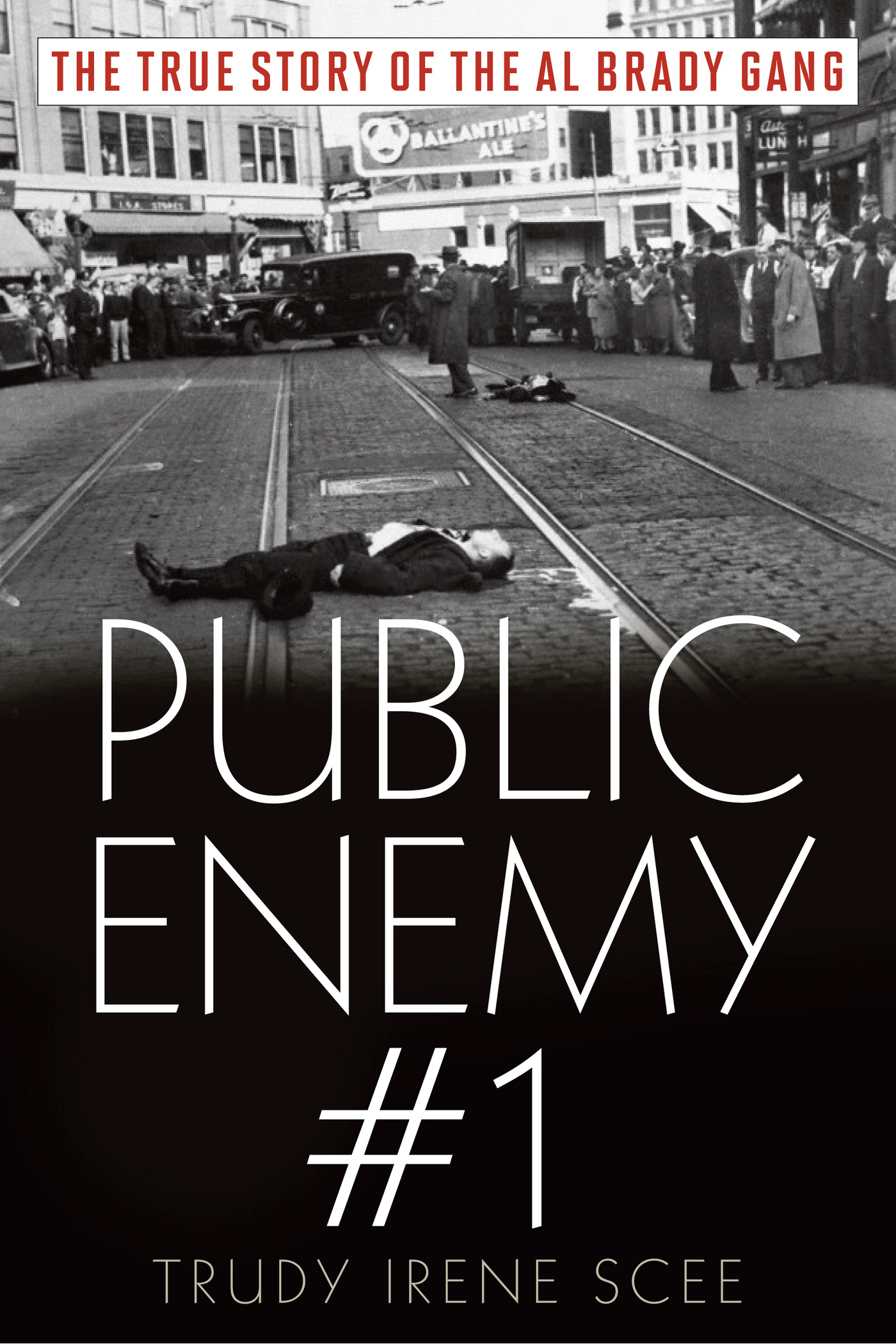
About 150 to 200 robberies have been attributed to Alfred James Brady, Clarence Lee Shaffer Jr., and Rhuel James Dalhover, and a few of their associates, over the course of their reign as one of Americas most prolificor destructivegangs of the Great Depression era. Known commonly as The Brady Gang, the group was also deemed responsible for at least three murders (and considered guilty of a fourth, and possibly more), as well as committing a number of vicious assaults that had lasting repercussions for their victims. Much of their thievery and violence occurred before the Federal Bureau of Investigation, more limited in its jurisdiction in the early to mid-1930s than it would be by the end of the decade, became involved in hunting the gang down. The FBI did not become involved until the gangs crime spree was well underway, because, as far as was known or provable, the gang had not yet crossed state lines in the course of committing a single crime, nor committed another classification of crime then specifically under the jurisdiction of Federal Bureau as the department was called until mid-1935. Most cases of murder and robbery were state crimes, if committed within one states borders.
The Brady Gang, as a gang, first became active in 1935. Their reign in the criminal world would last for only two years, but they would be a wild two years. The gang members would eventually be pursued by the Federal Bureau, several state police departments, a plethora of local police and sheriffs departments, and even the Pinkerton National Detective Agency. They would be captured, and then escape; they would kill in cold blood, and continue on, seemingly without feeling any sense of guilt. They would cross paths with other notorious thugs, and deceive the women in their lives. Al Brady would be named Public Enemy No. 1, and Public Rat No. 1 by J. Edger Hoover, who also identified the gang as the most vicious one then operating in America. And even before 1935, when the men formed their gang, each had already had numerous run-ins with the law. Each had what would sometimes be called a misspent youth, including Al Brady, who was generally deemed the gangs leader.
Born in northwestern Indiana just outside of Kentland on October 25, 1910, Alfred James Brady seems to have enjoyed a fairly average childhoodat least, for a few years. He lived in the countryside and later attended elementary or grammar school in North Salem, Indiana. Kentland was and remains a small town, located in the flatlands of Jefferson Township of Newton County just a few miles from the Illinois border. It serves as the county seat, and was founded in 1860 as simply Kent, for Alexander J. Kent who acquired the then marshy site and helped prepare it for development. It was a farming and cattle town when Brady was born.
When Brady was just a few years old, however, his father Roy died in a farming accident. Young Alfred and his mother Clara Brady soon moved about 140 miles south to North Salem where Brady would attend school, and Clara remarried, to John A. Biddle. Brady would remain an only child.
North Salem is located in more central Indiana, an even smaller town than Kentland, first settled in 1835 in Hendricks County in the Eel River Township, and incorporated as a town in 1899. The nearby Eel River and Big Walnut Creek offered fishing opportunities to its residents, and the surrounding area consisted of low flat farmland to the east when Bradys family moved there, and woodlands to the west of the town. North Salem is located northwest of Indianapolis.
After the loss of his father a dozen years earlier, when Brady was just fourteen years old his stepfather died of gunshot wounds. The true story was never quite known to authorities, but the coroner ruled that the death was probably accidental. Rumors had circulated, however, that either Clara or Al had killed Biddle, who was also rumored to have been abusive to young Al.
Soon after his stepfathers death, Clara moved her son to Indianapolis in about 1925. By now, Brady had become a teenager with a quick temper, one allegedly experimenting with arson. The gray-eyed, light-brown-haired adult perhaps still had blonde hair into his teens as he had as a young child. Al Brady would never be a large man, and he was perhaps grown to his final height of five feet, six inches and weight of about 160 pounds by the time his mother died in December 1926. She was just thirty-seven years old, and Alfred only sixteen. Brady apparently received a guardian at this point, a man named Ira Wells.
Brady worked in an Indianapolis clothing store for a short while, and later for a time for a hot tamale stand, running errands. A friend of his family owned the stand, and Brady worked there, during part of 19311932. After this, Brady left his job, and seems to have wandered around, as many people did during what were the early years of the Great Depression, the great Stock Market Crash having occurred in 1929 and an increasingly severe economic downturn setting in soon thereafter. Farmland such as that where Brady was born was already suffering before the 1929 stock market crash. Yet, Brady seems to have worked as an automobile mechanic in his hometown of Kentland, Indiana for a short time during this period.
Around 1929, Al Brady set out to rob a grocer named Clifford Bernard in Indianapolis. He purportedly pretended that he had a gun in his pocket and demanded he be given all the money in the cashiers till, but was shot three times by a patrolman while fleeing the scene. He recovered, and received a suspended sentence.
Next pageFont size:
Interval:
Bookmark:
Similar books «Public Enemy Number One: The True Story of the Brady Gang»
Look at similar books to Public Enemy Number One: The True Story of the Brady Gang. We have selected literature similar in name and meaning in the hope of providing readers with more options to find new, interesting, not yet read works.
Discussion, reviews of the book Public Enemy Number One: The True Story of the Brady Gang and just readers' own opinions. Leave your comments, write what you think about the work, its meaning or the main characters. Specify what exactly you liked and what you didn't like, and why you think so.

